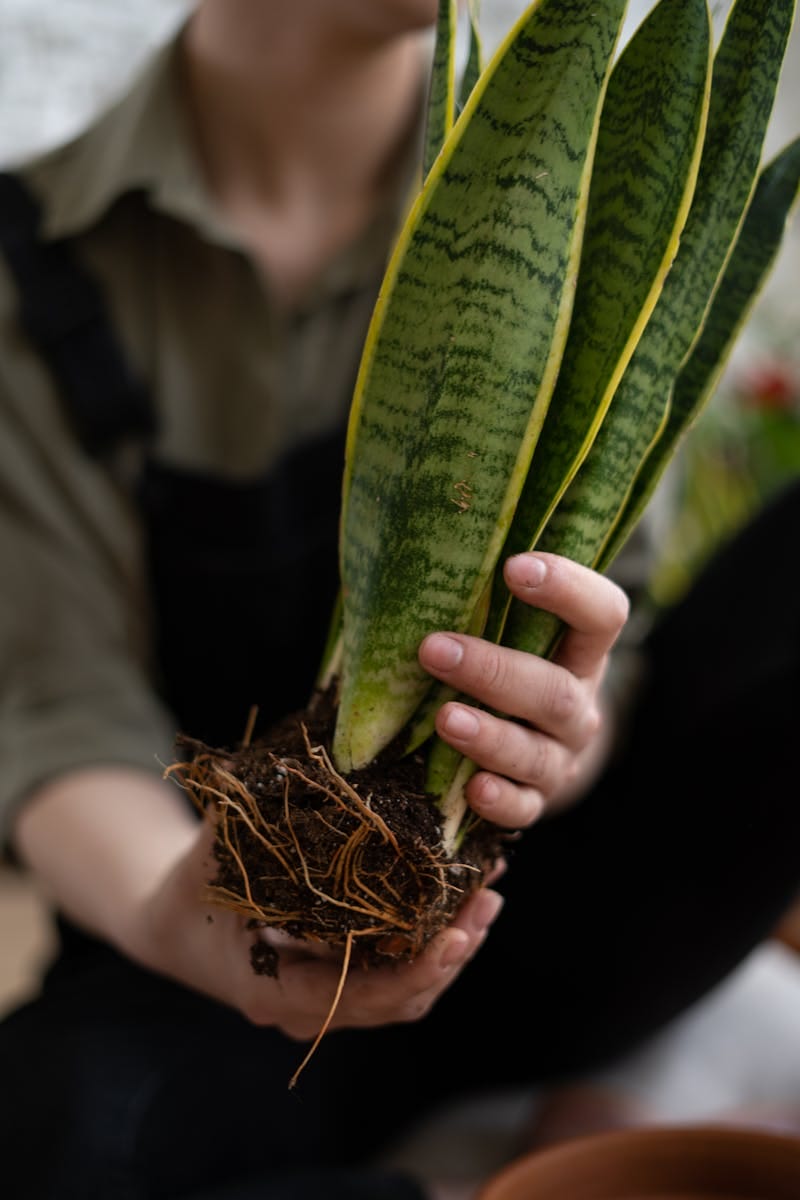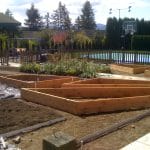The Gardener’s Guide to Transplanting: Timing, Roots, and Recovery
Guides How To's Planting

I’ve dug up and shifted more plants than I should admit. Some got too big for the corner I crammed them into; others just sat there sulking until I found them a sunnier patch. I even pulled a line of olive trees off the fence where they were sulking in half shade and gave them new homes out in full sun. The olives are already looking happier in their new spot. The grapes were the real win, though—I yanked them out of the soggy clay, set them up in raised beds, and they took off like nothing ever happened.
When’s the Best Time to Move a Plant?
Roots are most active in spring or fall, and the top of the plant isn’t sucking up all the energy.
- Fall is excellent if you’ve got mild winters. Give yourself at least five weeks before the first frost so that the roots can get settled.
- Spring works better if you’re in colder climates. Plants wake up, stretch their roots, and get to work before summer heat sets in.
Summer? Not my first choice. Moving something in the middle of a heatwave is like asking it to run a marathon on moving day. If you must, wait for a cloudy afternoon.
Site Check: Drainage and Sun
Check the drainage before planting. If your hole drains in an hour or two, the soil is fine for planting. If it lingers half the day or more, that soil is holding too much water, and anything you plant there could struggle with root rot after a heavy rain. Grapes especially hate wet feet—that’s why I moved mine into above-ground beds with lighter soil.
The sun is the other piece. My olives needed full sun. If you’re moving something that’s been living in the shade, don’t throw it straight into harsh afternoon light. Give it a transition period.
Root Pruning for Big Moves
If you’re moving a mature shrub or tree, you can set yourself up months in advance by root pruning. Slice around the plant with a sharp spade about a foot out from the trunk. It encourages new feeder roots to grow close in. Later, when you dig it up, you’ll have a tighter, healthier root ball instead of a sprawling mess that falls apart.
Prep Work: Soil, Water, and Mycorrhizae
I water the plant deeply the day before a move. Damp soil sticks together, and roots break less.
When I replant, I like to dust the roots with mycorrhizal fungi. I started tossing a bit of mycorrhizal fungi on the roots a few years back, nothing fancy, just a sprinkle before planting. To me, it’s like giving the roots a buddy underground—it helps them settle in quicker. I’ve tossed in Great White and MycoStop a few times—not magic dust, but I do think plants bounce back faster with it. Still, the soil calls the shots. Clay soil can hold water, sandy soil dries out too fast, and loam is the nice balance most gardeners hope for.
- Clay: Holds water too long. I’ll dig in compost or gypsum to loosen it up.
- Sandy: Let water run right through. I mix in compost or something like FoxFarm Ocean Forest to give it some body.
- Loam: That’s the dream. Just add compost to keep it lively.
If I’m planting trees and shrubs in a new bed, I’ll often use EB Stone Planting Mix or Dr. Earth Home Grown as a base to get them started.
Digging and Lifting
Save as much of the root ball as you can carry. For trees, a rough rule is around a foot of the roots for every inch or so of trunk.
If you’re moving from one soil type to another, gently knock or wash away some of the old soil to prevent roots from being stuck in their old dirt bubble. Cut damaged roots clean with pruners. Don’t leave ragged tears. And whatever you do, don’t let roots dry out—wrap them in damp burlap, compost, or even an old towel until they’re back in the ground.
Gopher Proofing
In my area, gophers can wipe out a young tree before it’s even settled. If you have them too, place your plant in a wire gopher cage before backfilling. Digger’s Root Guard makes sturdy ones. Roots will grow through, but critters won’t chew straight through the heart of your plant.
Acclimating to New Conditions
This is something gardeners often skip. A plant grown under nursery shade cloth or tucked in a sheltered corner isn’t going to love being dropped into blazing sun and wind.
I’ll give new transplants a little shade cloth or a board on the sunny side for a week or two, then gradually pull it back. Windy spots sometimes need a temporary burlap screen until the roots anchor. Think of it as letting the plant adjust slowly—like easing into a new climate instead of jumping straight into the desert at high noon.
Irrigation Basics
Watering makes or breaks a transplant. Roots can’t drink efficiently right away, so you’ve got to be their support system.
- For shrubs and small trees, I run 2-gallon-per-hour drippers right over the root ball. Big trees may need a few spaced around.
- First few months? Deep water your plants two to three times a week, depending on your soil type. Clay holds water longer, and sandy soil dries out faster.
- For perennials, I still like a slow soak with the hose. It gives me a chance to see how the soil’s settling and whether I need to top off around the crown.
Planting in the New Hole
- When setting up the new hole, go wider than you think you need, but avoid digging it deeper than the root ball. Roots aren’t looking to plunge straight down like a post; they like to spread out and wander sideways. Give them some breathing room around the edges, and they’ll settle in quicker without you having to fuss over them later.
- Keep the crown level with the surrounding soil—not buried, not sticking up like a molehill.
- Backfill gently, firming the soil just enough to eliminate air pockets.
- Water slowly and steadily, so the whole root ball soaks through.
Mulch after, but keep it a couple of inches away from the crown so it doesn’t rot.
Aftercare
- Watering: Keep up with deep watering for at least three months.
- Fertilizer: Don’t rush. Wait until fine feeder roots grow back—usually three or four months.
- Shade instead of pruning: If a plant wilts, give it shade. Please don’t cut it back unless stems are broken or flopping.
Special Cases
- Evergreens: Move them in early spring before summer stress or winter dryness sets in.
- Tender grasses: It’s best to move them in spring so their roots don’t freeze out in winter.
- Bulbs: Shift them in fall or right after their foliage dies back in spring.
FAQs About Transplanting
How do I prevent transplant shock?
Should I prune after transplanting?
How long do I need to water?
What’s the worst time to transplant?
Do I need a gopher cage?
Transplanting is half patience, half prep. Sometimes you do everything right and the plant still sulks. Other times, like with my olives and grapes this year, everything clicks. Either way, every move teaches.
Learn More (Trusted .gov & .edu Sources)
- A Gardener’s Primer to Mycorrhizae — WSU Extension (pubs.extension.wsu.edu)
- Mycorrhiza: The Hidden Plant Support Network — USDA NRCS (PDF) (nrcs.usda.gov)
- Mycorrhizal Fungi — National Park Service (Mount Rainier) (nps.gov)
- Transplanting or Moving Trees and Shrubs — Penn State Extension (extension.psu.edu)
- Choosing Suitable Trees for Urban & Suburban Sites (Site Evaluation) — UF/IFAS (edis.ifas.ufl.edu)
- Planting and Transplanting Trees and Shrubs — University of Minnesota Extension (extension.umn.edu)
- Planting Landscape Trees — UC ANR (PDF) (anrcatalog.ucanr.edu)
- Guidelines for Planting Trees and Shrubs — UMass Amherst (umass.edu)
Share this post
Table of Contents
- When’s the Best Time to Move a Plant?
- Site Check: Drainage and Sun
- Root Pruning for Big Moves
- Prep Work: Soil, Water, and Mycorrhizae
- Digging and Lifting
- Gopher Proofing
- Acclimating to New Conditions
- Irrigation Basics
- Planting in the New Hole
- Aftercare
- Special Cases
- FAQs About Transplanting
- Learn More (Trusted .gov & .edu Sources)
All categories
More From The Garden
Disclosure: This post may contain affiliate links. That means if you click and buy, The Bright Garden may earn a small commission, at no extra cost to you. We only recommend products we’ve vetted and believe will benefit our readers.












